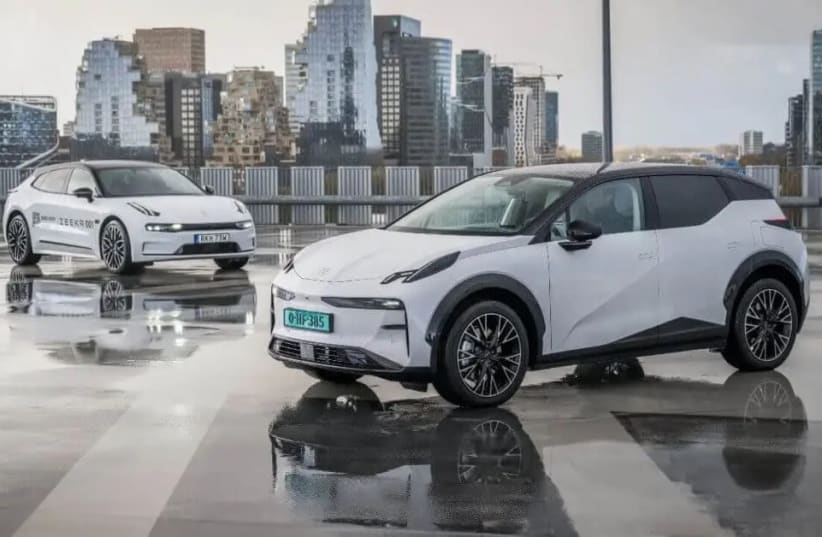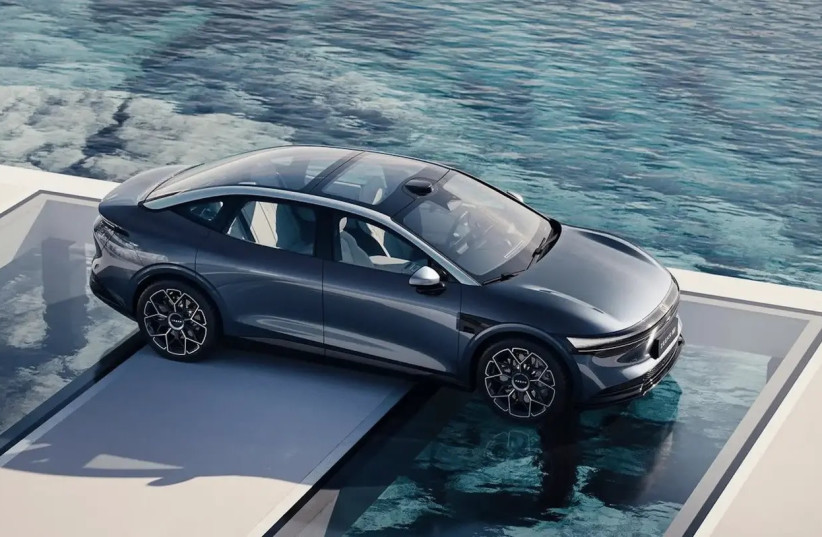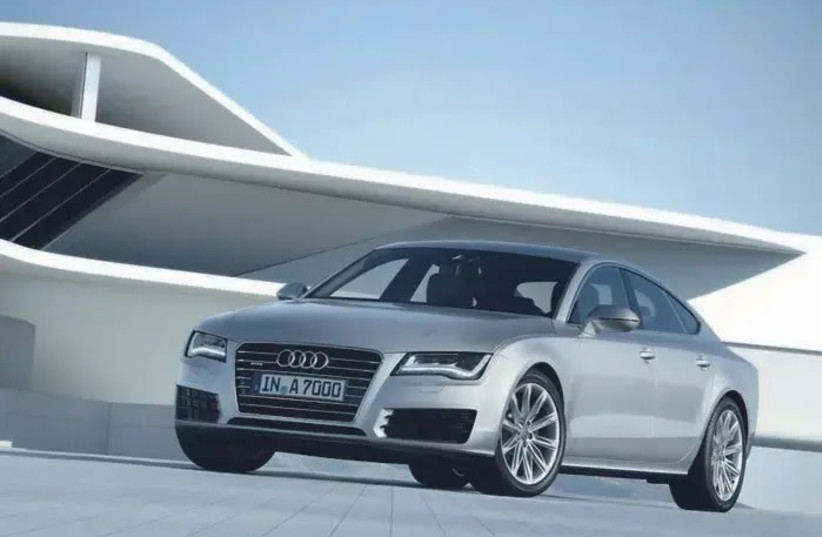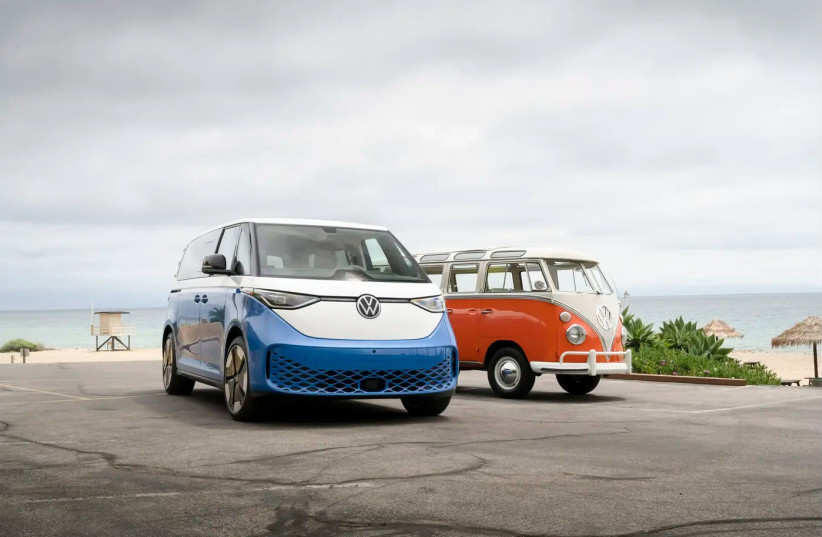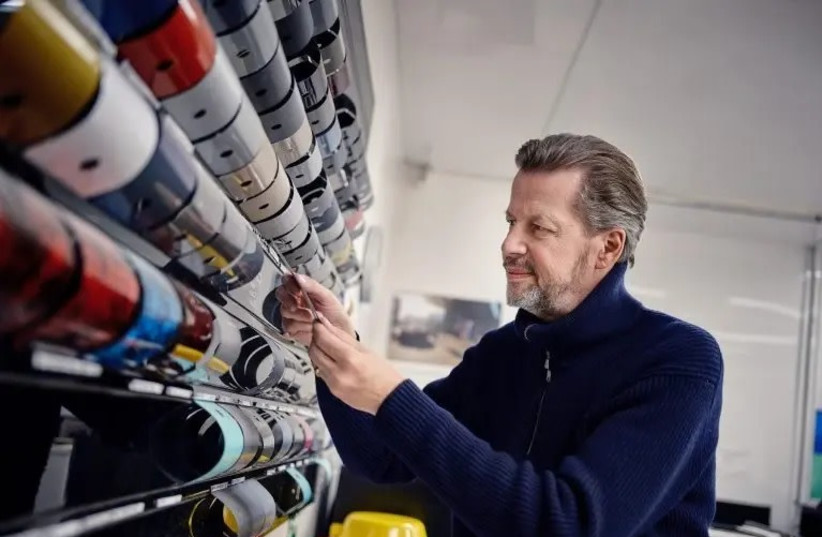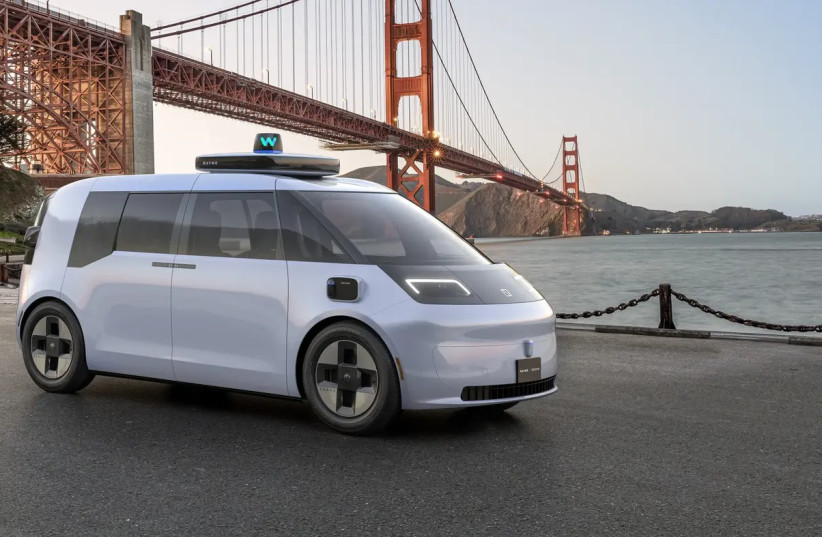Stefan Sielaff has already had a chance to work as a designer at Audi, Mercedes, and finally as head of design at Bentley, with a 32-year career, when he received an offer to lead the design at China's Geely.
Almost three years later, the Munich-born car designer oversees a team of 550 people at a large studio in Gothenburg, Sweden. His office door reads Senior Vice President of Design, and he is responsible for models such as Lynk & Co, launched in Israel a year ago, and serves as the chief designer for Zeekr, which will be launched in Israel next week in one of the first car launches since October 7.
"I visited Israel a few times, the first in 1980, at the age of 18. We were in Jerusalem, the Negev, and Kiryat Shmona. I have friends in Israel, and what happened touched my heart. I am very concerned for them," Sielaff says in an exclusive interview with Walla Cars.
Was it difficult to decide to move from Bentley to Geely?
"It was a big challenge, starting from a blank canvas. A design tradition, as I knew it at other manufacturers where I worked, is both an advantage and a disadvantage. When I came here, the goal was to create a brand and product philosophy from scratch. Take existing models and move forward from there."
Unlike some Chinese manufacturers that have landed here, Geely is not a startup. It is one of the largest and oldest car manufacturers in China, founded in 1986 as a refrigerator manufacturer, entering the automotive field in 1997. Today, it owns Swedish Volvo, British sports car manufacturer Lotus, the London taxi manufacturer, and holds 50% of Smart, whose models it currently produces and are marketed by the original brand owner holding the other 50%, Mercedes.
Geely also has several original brands of its own sold in Israel: Geometry, whose C model was the best-selling electric vehicle in Israel in 2022 and the second best-selling in 2023, the young luxury brand Lynk & Co specializing in plug-in models, and Zeekr, a luxury brand specializing in electric models.
Three years after its establishment, Zeekr will launch its activities in Israel through Geo Mobility from the Union Group, with a unique salon car in a shooting brake configuration, the 001, and with the Zeekr-X crossover. In recent weeks, it launched its first sedan, the 007, with its arrival in Europe not yet announced. Zeekr also has an Israeli connection, with Mobileye being its autonomous driving technology provider, holding a stake in the manufacturer.
Sielaff: "Zeekr is only at the beginning in Europe; it is sold in the Netherlands, soon in Israel, and will also be launched in Germany this year. But my friends in Munich have already asked me about it, and they are not from the industry. For my generation, a car is a symbol of freedom. Young people look at cars differently but are interested in electric ones."
What makes Zeekr a luxury car? It doesn't have the history of racing in Le Mans or Grand Prix for decades like other brands you designed for in the past. "The most important thing is the highest quality. People are not stupid. It's not enough to label a car as luxury for it to be considered such. People need to see and feel the luxury. They need to feel it in the showroom, from sitting in the car and the showroom itself."
What about technology? "It plays an important role, and even more so in electric vehicles. In software, interfaces, and of course in batteries, where we are at the highest level and some of the older brands still struggle with them. In an electric vehicle, you want long range and excellent performance, and we know how to deliver that."
Zeekr's slogan is design centered on the person. What does that mean in practice? "Thinking at every stage about the interaction of the person with the car. Design that is not cold, in the right proportions that you can connect to. A horse and a donkey are not very different, the difference is in proportions. A person feels uncomfortable in front of a shark, but a dolphin seems like a warm and friendly creature."
People find it hard to bond with an electric car like they do with V6 or V8 engine cars. "When they sit in a Zeekr and press the gas pedal, feeling the power and torque, they won't miss any V8. I drove a Porsche 911 before getting my company car, and the pace of the electric car is amazing. Even as a steering enthusiast, maybe especially as a steering enthusiast, you bond with this car no less than with a Porsche or Bentley."
Sielaff is part of a trend that began in the last decade, of German designers being called to upgrade the cars of Asian manufacturers. Peter Schreyer from Volkswagen was responsible for Kia's design revolution and later for its parent company Hyundai. The best-selling car in Israel last year, the BYD Atto 3, was designed by Wolfgang Egger, former head of Audi's design department.
Germans have always been known for excelling in engineering. How did you also take over design? "It's a bit funny. Peter was my mentor and boss at Audi many years ago. He is a bit older than me and celebrated his 70th birthday in July. Wolfgang Egger is my age, like Klaus Zyciora at Shenzen (another large Chinese manufacturer that hasn't yet arrived in Israel; Zyciora served until early last year as head of Volkswagen's design department - A.A.). He celebrated his 60th birthday last December, and I in January."
It seems you all compete and remain friends. "More or less. In the end, I think the secret is that we all come from a generation that studied product design before turning to car design. We all grew up on Bauhaus philosophy, on the critical connection between form and use. To deal with essence. Not to do in design more than what is really needed. And it works with manufacturers in South Korea and China as well."
We have seen quite a few Chinese cars with rather exaggerated designs. "China has a long history, also in design. I saw in China 2000-year-old ceramic tools with very pure lines. Chinese architecture is also very matter-of-fact, and look at calligraphy, which grew in China like in Japan, with the investment in every movement to be the most correct and accurate. Overdesign arrived when the culture got a bit lost, but today customers in China also don't want the heaviness."
We were always promised that electric cars would look different from gasoline and diesel cars. That you don't need the engine compartment in front, that there would be much more flexibility in design. In the end, they look almost the same. Is it because of technological limitations or because you adapt the shape to the conservative taste of customers?
"Regulation is to blame. Look at the Volkswagen Bus from the 60s. You sit right on the front axle, with your legs ahead of it. The engine is located behind the rear axle, and you have a huge interior space, almost like an electric car. So why doesn't the electric Volkswagen ID.BUZZ look like that? Because you can't build cars like the Bus from the 60s today. You need protections for the driver and pedestrians, space for all the cameras and sensors, and the brain to survive in an accident. This dictates a configuration that cannot be revolutionary. We have to design according to regulations."
So, actually, the ones designing modern cars are the bureaucrats? "I tell my team, aged 30-40, that in the end, we are building a box with four wheels. And we need to give it enough love and attention so it looks different from the other boxes. And it works."
The Zeekr X is part of a trio, based on the same platform and components as the new Smart 1 launched here last month and the Volvo EX30, which will arrive soon. Was there coordination between you in their design? "Honestly, each of the three was designed according to the brand's philosophy. The goal was for the customer to immediately recognize the product as a Volvo, Smart, or Zeekr."
And yet they are more different, for example, from Volkswagen Polo and Seat Ibiza that also share a common base. "In electric cars, it is easier to create this difference. I am very proud of the X, both in its exterior design and in what we managed to do in the passenger compartment."
In ten years, will electric cars look different? "The development can come from aerodynamics, which is very important on the highway to reduce wind resistance and improve range, but much less significant at city speeds. This could take urban electric cars to a different place. And there is safety: if the cars communicate with each other in the future, it could ensure they don't collide with each other, so maybe we won't need all the safety devices and regulations, which will give us more freedom. I dream of creating a monobox car where the driver sits right at the front. Zeekr is now supplying 100 autonomous vehicles to Waymo (Google's parent company's robotaxi division - A.A.), which will operate in San Francisco and Los Angeles. If there is no driver, you don't need a steering wheel, then there is even more potential for flexibility."
What role will design play in the autonomous car era? "Even today, when I land somewhere and take a taxi from the airport
